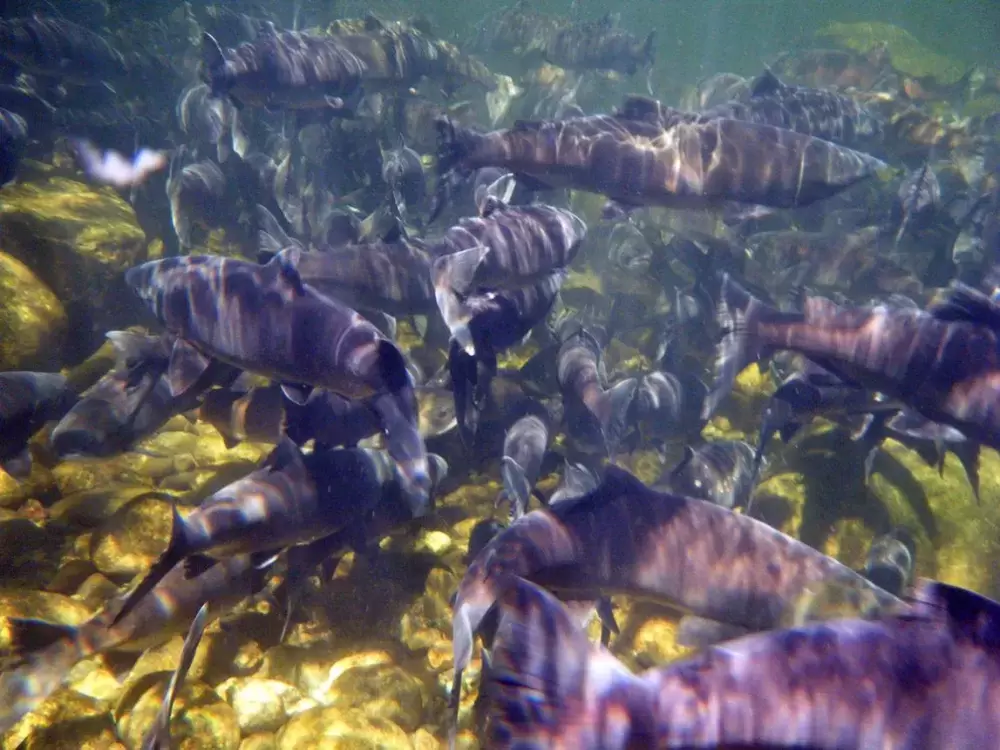Fisheries and Oceans Canada has ordered a complete closure of harvesting Area 23/Somass River sockeye run, based on a pre-season run forecast of 172,000 fish.
The closure, dated April 12, affects all commercial, recreational, Aboriginal commercial and Aboriginal food fisheries.
While the order poses a hardship for some Nuu-chah-nulth Nations, those low numbers make a full closure absolutely necessary, according to Tseshaht fisheries manager Andy Olsen.
“It is very low. We are not planning any fishing of any kind except for our test boat, for some samples,” Olsen said, “No sockeye fishing by First Nations or others.”
As such, none of the affected nations have opposed the closure, he noted.
“People are upset that there is not going to be any fish, but they also understand that they can’t fish at this number.”
For some years, Tseshaht and Hupacasath First Nations have been members of the Fisheries Roundtable, a stakeholder group that meets to discuss and manage the various salmon fisheries on the Somass River.
Olsen explained that there are “biological benchmarks” which must be met in order for sufficient escapement and, ultimately, the survival of the run. The forecast of 172,000 fish is well above the biological benchmark, he explained, but the run size must significantly exceed the biological benchmark in order to make a harvest sustainable.
“They are set that way because everybody agreed we need more fish into the [Sproat and Great Central] lakes to get big returns back for everybody in the future,” Olsen said.
“Everybody at the roundtable has committed to meet these production-based escapement targets to build up the runs.”
Olsen said one major goal is to avoid the wild fluctuations in run size by careful management. Ironically, the 2016 Somass sockeye run was especially bountiful: 1.1 million fish returned to the system with escapement of well over 400,000 fish. That’s well over twice the total predicted 2017 return.
The low 2017 return forecast is based on poor escapement in 2013, Olsen explained.
“We had just over 200,000 adults and 425,000 jacks [two-year-old males]. So it was a record number of jacks, but we didn’t get a huge number of adults. The [2017] forecast is based partly on the smolt sampling [DFO] did in the lakes. They didn’t see a lot of fish. And that’s what’s driving this forecast.”
The next run re-forecast is set for June 29. Olsen said a significant upgrade in the forecast could make some harvesting possible.
“Unless we see something astronomical. Hundreds of thousands of fish going upstream. That would change people’s minds,” Olsen said.
Contacted later in the day, Tseshaht council fisheries spokesperson Richard Watts said the Nation would press for allocations of substitute species to make up the deficit.
DFO salmon technician Jeff Till said a run forecast of 172,000 fish is hardly catastrophic, but anything below 200,000 is a cause for concern.
On the positive side, Till said DFO has upgraded all of its video monitoring equipment, and the cameras are already running at the Sproat Lake monitoring site, and Great Central Lake will be activated next week.
That being said, however, they will not be subject to real-time monitoring until the run begins to ramp up.
“As far as I know, there hasn’t been anything through yet,” Till said. “It wouldn’t be surprising if we didn’t see much of anything until mid-May.”
Till said for many years, the only active video monitoring was at the Stamp Falls fish ladder. That setup became a tourist attraction in itself. At Great Central and Sproat Lakes, sockeye passed through tunnels equipped with electronic fish counters.
“We’ve had full video systems for the past three or four years,” Till said.







